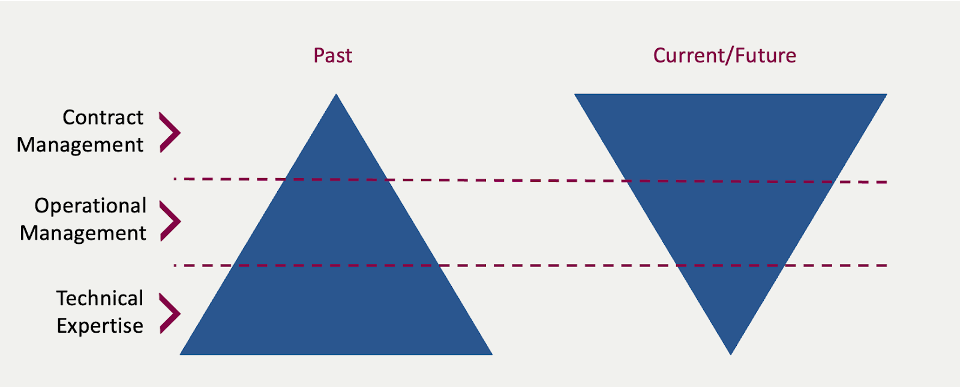
24 July 2024
Request your demo of the Sigrid® | Software Assurance Platform:

3 min read

Outsourcing. Although the hype is over, the concept of outsourcing work has firmly established itself in the theory and practice of organizations and companies. Also in IT.
There are many outspoken supporters of the outsourcing paradigm who seem to rally around the idea “If it’s not your core business, outsource it!”. While I wholeheartedly agree that outsourcing is a smart move in many cases, people seem to forget a second rule of outsourcing: Don’t outsource anything that you can’t value or assess properly!
At SIG, this is exactly where I see problems arise time and time again. Many organizations following the hype of outsourcing their technical IT work (be it architecture or coding) have invested in large departments of contract managers at the expense of the internal technical organization.
I call it the “reverse pyramid”.
In the past, many enterprise organizations were characterized by large departments of technical experts who were responsible for the product and infrastructure of the company’s services. This is not just true of the large engineering companies that brought products like the Walkman, Discman, and later the Smartphone. Large groups of engineers toiled to design and build the products we love so much. This is also true of many companies in the IT industry.

Today, however, we often see the effects of outsourcing in the structure and setup of a company. The group of technical experts has been reduced to almost nothing, while a large group of contract managers has taken their place.
And this poses a problem when contracts are drafted without the necessary expertise to assess what is being purchased. Don’t get me wrong, contract management is an interesting occupation that requires skills from a variety of fields to be successful. But in the end, when things get out of hand, and the happy flow is far from the case, one will have to fall back on someone who has an in-depth knowledge of what was outsourced: the technical expert.
I have often been part of an escalation and mediation process where we had to search the deepest caverns of the organization for an expert who was still with the company and who could provide the company-specific technical context needed to help solve the problem.
The shallower the pyramid, the more dangerous your position becomes. In my experience, there are two things every organization should do to avoid this, and to safely leverage the benefits that outsourcing can bring your business:
Not only are these investments that will pay off in the long run, you are also able to take your relationship with a supplier to a new level. By being a challenging business partner, you will be able to build for success together, rather than passively waiting for mediocre work to be done as the supplier’s best people are challenged by their other customers.
We'll keep you posted on the latest news, events, and publications.